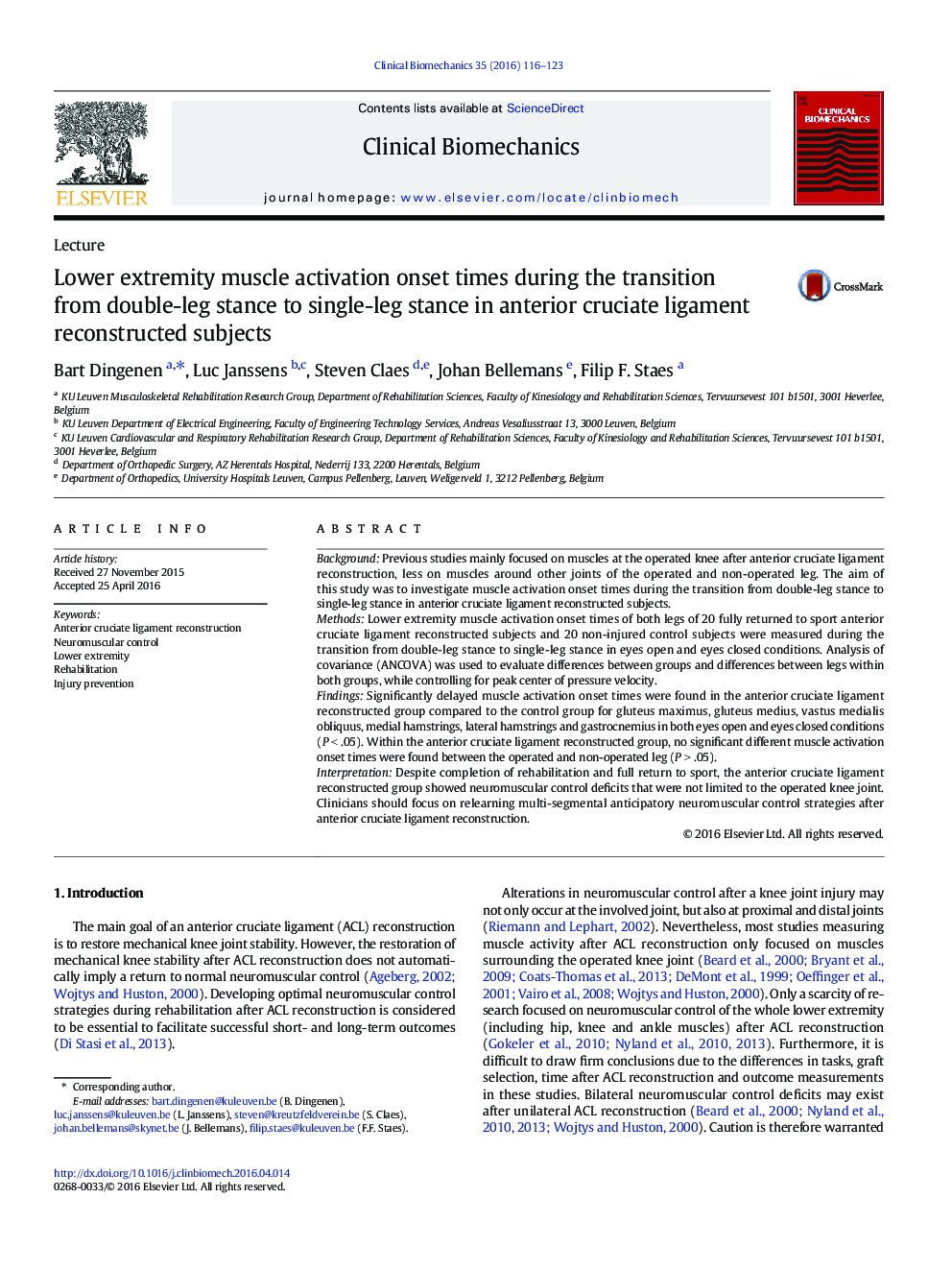| کد مقاله | کد نشریه | سال انتشار | مقاله انگلیسی | نسخه تمام متن |
|---|---|---|---|---|
| 4050115 | 1603743 | 2016 | 8 صفحه PDF | دانلود رایگان |
• Delayed muscle activity was found after anterior cruciate ligament reconstruction.
• Not only muscles crossing the knee, but also gluteal muscles were later activated.
• No differences were found between legs within the reconstructed group.
• Motor control deficits may persist despite return to sport.
• Clinicians should focus on targeted central nervous system retraining strategies.
BackgroundPrevious studies mainly focused on muscles at the operated knee after anterior cruciate ligament reconstruction, less on muscles around other joints of the operated and non-operated leg. The aim of this study was to investigate muscle activation onset times during the transition from double-leg stance to single-leg stance in anterior cruciate ligament reconstructed subjects.MethodsLower extremity muscle activation onset times of both legs of 20 fully returned to sport anterior cruciate ligament reconstructed subjects and 20 non-injured control subjects were measured during the transition from double-leg stance to single-leg stance in eyes open and eyes closed conditions. Analysis of covariance (ANCOVA) was used to evaluate differences between groups and differences between legs within both groups, while controlling for peak center of pressure velocity.FindingsSignificantly delayed muscle activation onset times were found in the anterior cruciate ligament reconstructed group compared to the control group for gluteus maximus, gluteus medius, vastus medialis obliquus, medial hamstrings, lateral hamstrings and gastrocnemius in both eyes open and eyes closed conditions (P < .05). Within the anterior cruciate ligament reconstructed group, no significant different muscle activation onset times were found between the operated and non-operated leg (P > .05).InterpretationDespite completion of rehabilitation and full return to sport, the anterior cruciate ligament reconstructed group showed neuromuscular control deficits that were not limited to the operated knee joint. Clinicians should focus on relearning multi-segmental anticipatory neuromuscular control strategies after anterior cruciate ligament reconstruction.
Journal: Clinical Biomechanics - Volume 35, June 2016, Pages 116–123
